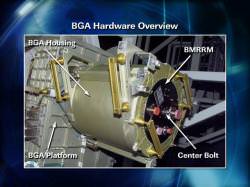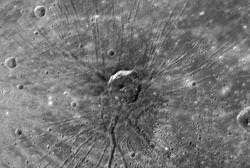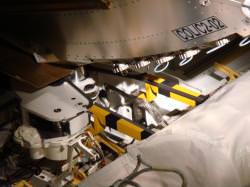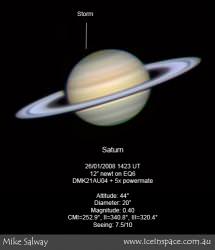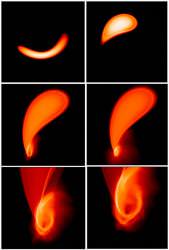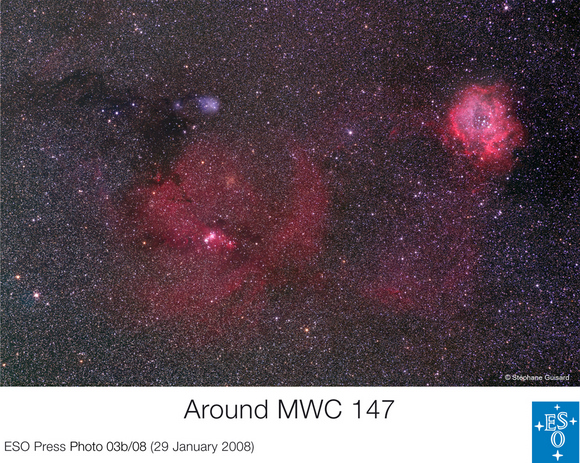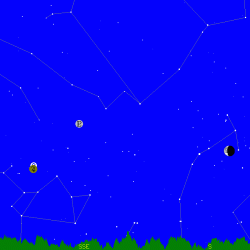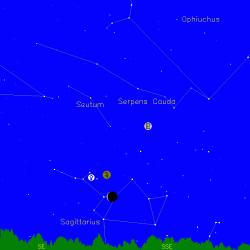At the end of Wednesday’s successful spacewalk to change out a faulty motor on one of the International Space Station’s solar array positioning devices, the astronauts outside the ISS and flight controllers in Houston were congratulating each other on the group effort it took to pull off this particularly tricky and potentially dangerous repair job.
“You guys looked really good to us. Thanks for making it look so easy,” Mission Control in Houston radioed up to the spacewalkers after their seven-hour and 10 minutes EVA.
“Yeah,” said ISS astronaut Dan Tani. “And we did’t even have to put on a tie.”
This spacewalk really was a collaboration between the “suits and ties” at NASA. The suits — spacesuits, that is — were worn by astronauts Tani and Peggy Whitson. The ties were sported by the engineers and astronauts in Mission Control who planned the repair and guided the spacewalkers during the entire EVA.
Tani and Whitson were thanking one tie-wearing astronaut in particular. Tom Marshburn had practiced the choreography of the spacewalk in the Neutral Buoyancy Lab in Houston, and shared his insights with the spacewalkers. Usually astronauts get to practice their own EVA’s in the enormous pool that contains a mock-up of the ISS. But the Bearing Motor Roll Ring Module on the starboard solar array quit working in December when Whitson and Tani were already on board the station. So the plan and nuances of the EVA were tested in the pool by Marshburn and former ISS resident Suni Williams and relayed up to Tani and Whitson.
The spacewalk was especially hazardous because of the risk of electrical shock from 160 volts of electricity that flows through the arrays. For safety, Whitson and Tani waited until the International Space Station was on the dark side of Earth, giving them only 33 minute increments to complete their tasks. Whitson had to squeeze inside the station’s truss girder to swap out the 250 pound (113 kilograms) garbage can-sized motor.
The new motor successfully performed a 360-degree test spin during the spacewalk. It’s power-generating capabilities were tested successfully as well.
“Yay, it works!” exclaimed Whitson as she and Tani watched the solar wing turn. “Excellent, outstanding…isn’t that cool?”
The successful repair means the station should be able to generate enough power to support the new modules that will be brought on the next shuttle missions, the European Columbus science lab, and the Japanese Kibo labratory.
“Given the complexity of this spacewalk and the risks that we had to manage … we are exceptionally pleased with how things went,” flight director Kwatsi Alibaruho said after the EVA.
In addition to the motor repair, Whitson and Tani also performed another inspection of the station’s starboard Solar Alpha Rotary Joint, a 10-ft wide gear that keeps the solar wings pointing toward the sun The SARJ is not working and is contaminated with metal shavings. The spacewalkers evaluated damage from the debris and collected samples from areas previously unseen.
Alibaruho said the new debris samples will help determine what repairs will be done, perhaps later this year. NASA hopes to launch up to five shuttle flights to the ISS this year.
Wednesday’s EVA was the final planned spacewalk of the Expedition 16 mission and the 101st dedicated to space station assembly and maintenance. The spacewalk also marked the sixth career EVA’s for both Whitson and Tani.
So, there’s just one question for Dan Tani: Which is harder — donning a 280 lb spacesuit or tying a Windsor Knot?
Original News Source: NASA TV

